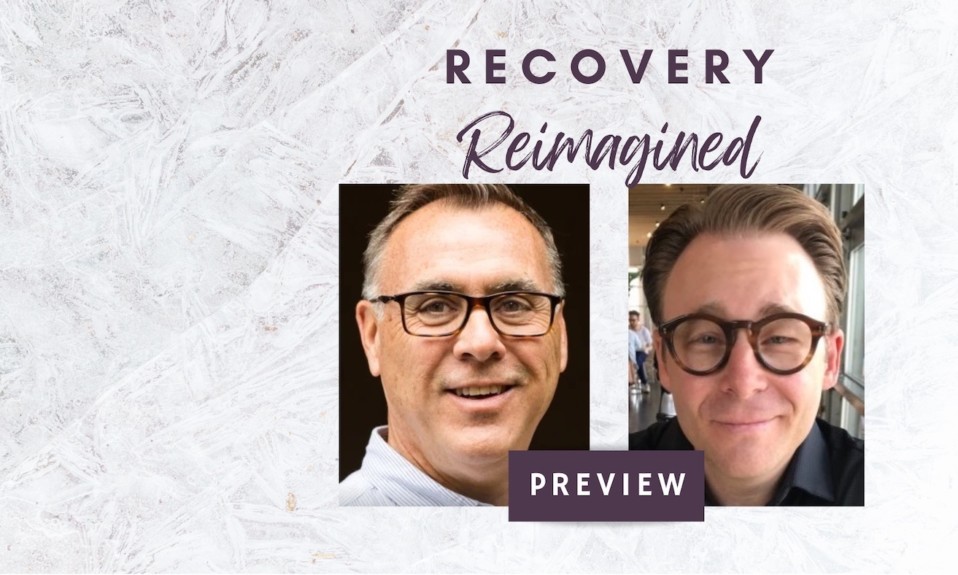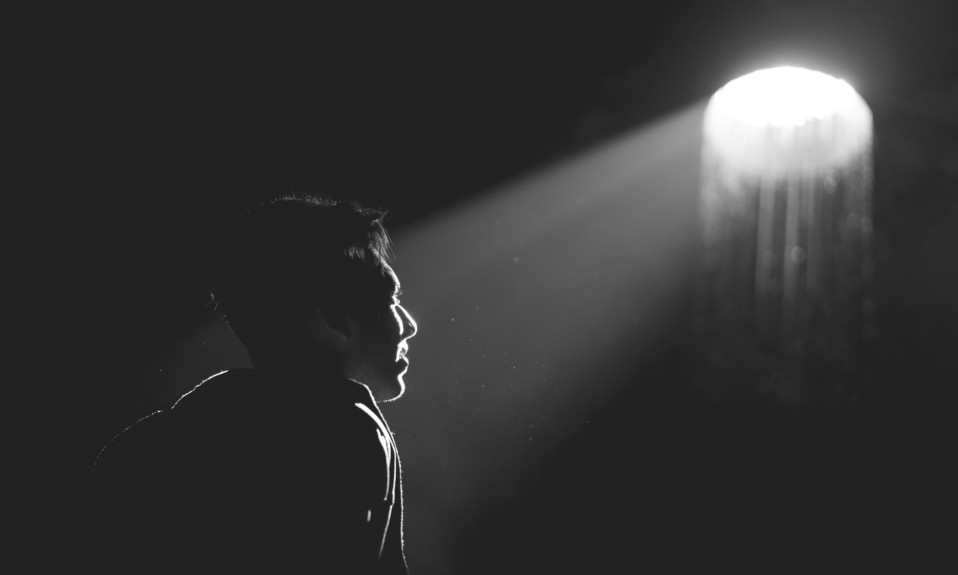The treatment community can’t heal others unless it is healthy itself
This post is reprinted with permission from one of TreatmentMagazine.com’s go-to blogs about addiction, treatment and recovery: Recovery Review.
By William Stauffer
Perhaps the most important insight in recent recovery history is that recovery community, through collaborative effort leads to restoration not only in individual lives but supports healing across entire communities, in all their diversity. Recovery capital is a function of self and community agency. We saw that insight take form twenty years ago, highlighted in the writings of Bill White, Don Coyhis and many others. Bill wrote about recovery rising and community as the primary change agent of healing. Don wrote about incorporating native community methods into healing processes. Not narrowly defined peer service, but the capacity of community to heal itself. It works across America in modestly supported pockets. Developing recovery capital is fundamentally about resourcing and supporting diverse communities to address their own needs. This meets a lot of resistance.
We need to examine these headwinds if we are to keep moving forward. It is critical to take a hard look at how the recovery community gets sidelined and coopted in subtle or not so subtle ways. Headwinds that create barriers to self-and community agency must be fixed if we are to get more Americans into wellness. These forces often stem from homeostasis, even as the state of things is woefully inadequate to the tasks at hand.
To change, people and systems alike must come to terms with the impact of stigma on our recovery community. We must acknowledge that stigma of addiction and the discounting of persons with lived experiences is commonplace across all of our institutions.
If we can reach a point where our voices are included in matters about us, our communities are strengthened, and we have real equity in the systems that serve us, headwinds can become tailwinds. To change, people and systems alike must come to terms with the impact of stigma on our recovery community. We must acknowledge that stigma of addiction and the discounting of persons with lived experiences is commonplace across all of our institutions. Stigma in the SUD realm often plays out across four interrelated dynamics:
- Cultural appropriation—The inappropriate or unacknowledged adoption of an element or elements of one culture or identity by members of another culture or identity. This is particularly true in respect to marginalized groups, which include the recovery community. Recovery initiatives not grounded in recovery are titled and run as such; treatment organizations rebrand services as recovery oriented for funding. Projects to collect our stories by outsiders are funded. Foundational elements of the recovery movement get appropriated when they become valuable. This extends to the very notion of recovery and all of its facets.
- Colonization—The action or process of settling among and establishing control over an indigenous people (in this case the recovery community). Control over what happens in the environment is delegated by entities in power to groups outside of the indigenous community to sustain control. This serves to undermine and inhibit the capacity of the inhabitants of recovery community to manage their own healing.
- Barriers—Healing methods and those permitted to provide such services shift away from the very recovery community who developed them. Barriers are erected to keep the marginalized group out in ways that the dominant group does not want or to prevent any shift of power to the marginalized group. Services become harder to provide. These barriers have the most severe and disparate impact on persons who are members of other marginalized groups, like BIPOC recovery communities.
- Cooptation—People from outside of recovery community organizations are placed in power over the role and function of recovery community groups to maintain the status quo. This serves to keep the recovery communities from developing a greater degree of agency over their own healing.
These are serious concerns not often spoken about in open dialogue out of very real risks of retribution but commonly discussed behind closed doors within the recovery community. Over the years, I have spoken to people around the nation in the recovery community who talk about how these dynamics play out. They include:
- Events or services initiated by the recovery community get taken over by treatment agencies or the government. We end up fighting to retain even window dressing levels of inclusion in our own projects.
- Pedagogy developed by us and for us get taken away and end up under the control of our bureaucracies, who then place barriers for us to access these very same methods of instruction. The process of learning and service provision begins to replicate the very challenges that they were developed to navigate around.
- Recovery communities are disparately resourced, instead academic, and large human service organizations get the lion share of resources. When funding is set up for us, recovery community groups are often pitted against each other for scraps. This creates further divisions that sustains an unhealthy homeostasis.
- Who has control over our stories matters! Our stories get clipped into other groups agendas. We get written out of our own history. Our stories must be handled in ethical ways. Communities who are written out of their own teachings cease to exist in a generation. Revisionist history replaces the authentic history.
Who has control over our stories matters! Our stories get clipped into other groups agendas. We get written out of our own history. Our stories must be handled in ethical ways.
Even the most well-intentioned policymakers often end up unintentionally reinforcing these dynamics. Stigma is that powerful and that entrenched. If you are in a position of authority over our communities and you see people asking a lot of hard questions or becoming upset by what you are doing, perhaps share some of the power and strive to understand it and seek remedy in collaborative ways to strengthen agentry. The more common reaction is to quash it. Shut it down and move the process forward to meet predetermined objectives.
Signs of affirming recovery community agentry:
- Systems that affirm our very right to define ourselves and keep in check ever-present tendencies to define and control us have a better opportunity to effectively strengthen recovery through collaborative action.
- Systems accountable to those of us they serve and open to this responsibility with a sensitivity to the most marginalized subgroups can augment our strengths, engender trust and lead to more effective outcomes.
- As Recovery capital is a function of community and is not just an individual process, systems that ensure that resources get to the members of the community are telegraphing that they understand communities are best suited to affect their own healing. The opposite of paternalistic care, which is rooted in stigma.
Last year, I did a series of interviews with some of the pioneers of the New Advocacy Recovery Movement. One of the parts of the interview with Bev Haberle that resonated with me as fundamental in a recovery-oriented change processes is the centering of our efforts in community grounded ethics. During this interview with Bev, when I asked what she was most concerned about in respect to the future, she expressed a concern that we may end up falling backwards if not careful to pay attention to ethics grounded in the community served. She noted:
“I recall one of the Recovery Community Centers I was involved with and how much effort we put into building an authentic advisory group. People who served on this advisory group / vision team were charged with keeping us focused on the needs of the community and making sure everything we did was done with high ethical standards. They were charged with being stewards of quality recovery support services that meet the needs of the local Community being served. There was a lot of open discussion about what we were doing and we worked hard to make sure we stayed true to our community mission. They often spotted things the rest of us missed. People coming into our centers with what on the face of it looked like beneficial things but who had hidden agendas or self-dealing schemes. As a leader, I knew we needed them as our anchor to our mission.”
In Pennsylvania, we have horrific examples of disparate treatment of the recovery community. It happens in other states as well. What harms one of us harms us all.
Well-functioning systems spend a lot of energy examining ethics and making sure that they run in adherence to good principles. Even the best-intentioned systems do unintentional harm, but the best of them actively work to minimize and fix those harms. In Pennsylvania, we have horrific examples of disparate treatment of the recovery community. It happens in other states as well. What harms one of us harms us all. I see recovering people leaving our field in droves because of the impact of moral injury, as I noted in this article in Treatment Magazine last May:
“Being in recovery makes many of us “those people” who end up getting disparate care. Every time I see it, I recognize it could be me getting disparate care and insurmountable barriers to accessing help. I could have ended up in a body bag instead of having a life. Every single day this very long week, I have spent time on the phone with people describing care denials of life-sustaining medical interventions under the lens of seeing addiction as a moral failing by licensed medical professionals, persons in long-term recovery who are being denied employment for decades-old legal charges and more. It is a normal week. It also hurts my soul.”
What kind of system of care do we want? The one I want to create deals with the tough stuff head on.
Disparate treatment creates systemic wounds that require healing. Healthy systems welcome tough dialogues and seek healing solutions to these wounds, dysfunctional systems shut down those discussions as too difficult and end up causing even deeper scars. What harms one of us harms us all. What heals one of us heals us all. These are tough subjects, but the work to heal these wounds can shift our headwinds to tailwinds and help heal whole communities. Ignoring these wounds deepen these harms and prevent collective healing. What kind of system of care do we want? The one I want to create deals with the tough stuff head on. If this was an easy process, we would have fixed it decades ago, it remains the challenge before us.
This Recovery Review post is by William Stauffer, who has been executive director of Pennsylvania Recovery Organization Alliance (PRO-A), the statewide recovery organization of Pennsylvania. He is in long-term recovery since age 21 and has been actively engaged in public policy in the recovery arena for most of those years. He is also an adjunct professor of Social Work at Misericordia University in Dallas, Pa. Find more of his writing, as well as a thought-provoking range of articles, insights and expert opinions on treatment and addiction at RecoveryReview.com.blog.
Photo: Drew Dizzy Graham














